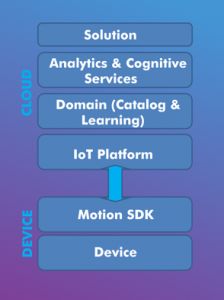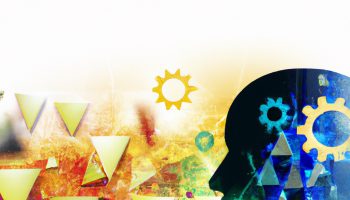Cognitive Internet of Things is about enabling current IoT technologies with human-like intelligence. The end goal is to provide expert advice based on the domains being targeted. Cognitive IoT can be applied on the edge gateway or in the cloud as part of the solution.
Let’s see how we can apply Cognitive IoT technologies for Sports domain. In Sports domain, there are actually 3 primarily use case –
- Learning from an expert/coach (or visually) and improving one’s game
- Personalization – where all information is personalized to improve a player’s game
- Continuous learning to keep a player improving his game based on how is he is playing from current and past records.
I will talk about an example of cricket. (I call this as connected cricket -) ).The real value that we want to derive is to enable batsman understand their game better, help them master various batting strokes like cover drive, pull shot etc., analyse their performance continuously to be an expert batsman, for instance what should I do to bat like Sachin Tendulkar.
With respect to a baller, the baller would like to understand how well he is bowling, his speed, his run-up, the way he delivers the ball, spin variations, all these insights can improve his game continuously (so there is a feedback loop) and how similar he is bowling to an expert baller, may be like Ashwin.
So let’s talk about how do you go about realizing it.
- Embedded device on cricket ball (without increasing form factor)
- Embedded device on cricket bat, pads, gloves
- A Connected Stadium.
 For an architecture stack perspective, you have the low powered embedded device installed inside the ball or embedded as part of the design and manufacturing process, its provides at least 6 Axis combo sensor for accelerometer and gyroscopes reading to identify any movement in 3d space. A Motion SDK is installed on top of the device to identify any movements in general and communicate the reading to the cloud. In cloud, we have the learning model or the training data. Basically, we would ask an expert batsman to bat and play various expert strokes like cover drive etc. and record their movements from sensors (bats/pads etc) as well as visuals (postures etc), this would be used as the training / test data and comparison would be made against it. As we are comparing 3D models, machine learning approaches like dimension reduction can be employed ( and many new innovation approaches) to compare two motion and predict the similarity. Similar training data is captured from an expert baller, along with other conceptual information like hand movements, pitch angles etc.
For an architecture stack perspective, you have the low powered embedded device installed inside the ball or embedded as part of the design and manufacturing process, its provides at least 6 Axis combo sensor for accelerometer and gyroscopes reading to identify any movement in 3d space. A Motion SDK is installed on top of the device to identify any movements in general and communicate the reading to the cloud. In cloud, we have the learning model or the training data. Basically, we would ask an expert batsman to bat and play various expert strokes like cover drive etc. and record their movements from sensors (bats/pads etc) as well as visuals (postures etc), this would be used as the training / test data and comparison would be made against it. As we are comparing 3D models, machine learning approaches like dimension reduction can be employed ( and many new innovation approaches) to compare two motion and predict the similarity. Similar training data is captured from an expert baller, along with other conceptual information like hand movements, pitch angles etc.
The feedback is continuously captured and the system provides guidance for improving a player’s game. The player tracks all this information on his mobile and can now look at these insights and suggestions on how he can be an expert in his game. For instance, a player can ask a system “what is takes to master a cover drive like Sachin” and the system analyses the motion information from batting strokes (sensors on bats, pads etc.), visual information (postures etc.), compares it with an expert model and provide an accuracy score and suggestions to improve a players’ game. The key here is that the cognitive system understands the domain and its trained on the domain to provide an expert advice or suggestion.
The same technique and concept can be applied in any game to get cognitive insights. In future, technology would be a key enabler in Sports.
The following is part of my presentation that I delivered at IoTNext. I will update the article with the youtube video once available.



